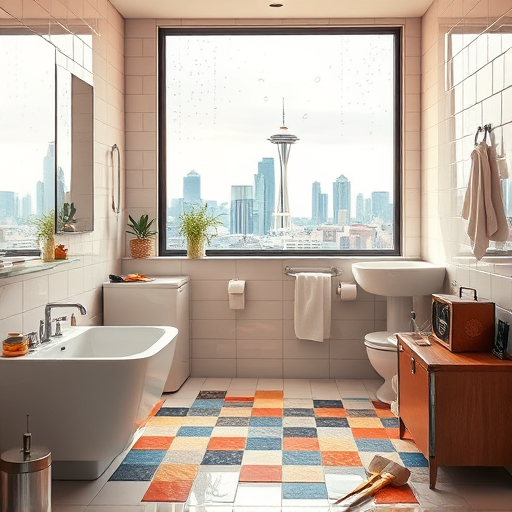
How to Replace Old Bathroom Fixtures: A Step-by-Step Guide
How Do You Know When It's Time to Replace Old Bathroom Fixtures?
Recognizing when to replace bathroom fixtures is crucial for maintaining a functional and stylish space. Common signs include persistent leaks, corrosion, discoloration, or outdated designs that no longer match your aesthetic. If fixtures like sinks, toilets, or faucets are showing signs of wear or inefficiency, replacing them can prevent future issues and enhance your bathroom’s appearance.
What Are the Benefits of Replacing Old Bathroom Fixtures?
- Improved Functionality: Upgrading fixtures can enhance water efficiency and reduce utility costs.
- Enhanced Aesthetics: Modern fixtures elevate your bathroom’s style and value.
- Increased Comfort: New fixtures often come with ergonomic designs and better performance.
- Reduced Maintenance: Newer models require less frequent repairs and simple maintenance.
What Tools and Materials Do You Need to Learn How to Replace Old Bathroom Fixtures?
Before starting, gather essential tools and materials to ensure a smooth replacement process:
- Adjustable wrench and channel lock pliers
- Screwdrivers (Phillips and flat-head)
- Plumber's putty or silicone sealant
- Replacement fixtures (sinks, faucets, toilets)
- Bucket and towels for water drainage
- WD-40 or penetrating oil
- Pipe wrench (if necessary)
- Replacement supply lines and mounting hardware
How Do You Prepare Your Bathroom for Fixture Replacement?
Preparation is key to avoiding mess and damage. Follow these steps:
- Turn off the water supply to the affected fixtures.
- Drain remaining water by opening the faucets and flushing the toilet.
- Protect the surrounding area with towels or plastic sheeting.
- Remove any accessories or decorative items around the fixtures.
- Gather all tools and parts needed for the removal and installation process.
What Is the Step-by-Step Process for Replacing a Bathroom Sink?
Replacing a sink involves removing the old unit and installing a new one. Here’s how:
- Turn off the water supply and disconnect the drain pipes using pliers.
- Unscrew and remove the sink mounting brackets or clips.
- Carefully lift out the old sink.
- Clean the drain area and check for any damages or mold.
- Place the new sink in position, securing it with brackets or mounting hardware.
- Reconnect the drain and water supply lines, ensuring all connections are tight and leak-free.
- Apply silicone sealant around the edges for a waterproof seal.
- Turn on the water supply to test for leaks and proper function.
For high-quality options, consider exploring our bathroom vanity options to match your new sink.
How Do You Replace Your Old Toilet Safely and Effectively?
Toilet replacement can be straightforward with the right approach:
- Turn off the water supply and empty the tank by flushing.
- Disconnect the water line and remove bolts securing the toilet to the floor.
- Carefully lift the old toilet and set it aside.
- Clean the flange area, inspecting for damage.
- Install a new wax ring on the flange to ensure a proper seal.
- Secure the new toilet to the floor with bolts, and reconnect the water supply.
- Test for leaks and stability, making adjustments as needed.
To upgrade your entire bathroom setup, visit our bathroom remodeling services for expert assistance.
What Are Common Mistakes to Avoid When Learning How to Replace Old Bathroom Fixtures?
- Skipping Shut-off Procedures: Always shut off water before beginning to prevent flooding.
- Not Wearing Protective Gear: Use gloves and eye protection, especially when handling tools and old fixtures.
- Improper Sealing: Neglecting to apply sealant can cause leaks and water damage.
- Forcing Parts: Avoid forcing fits or hardware; proper alignment is crucial.
- Overtightening Connections: This can cause cracks or damage to fixtures and pipes.
How Can Professional Help Make Your Bathroom Fixture Replacement Easier?
If you're unsure or want to ensure a flawless upgrade, professional services can make a significant difference. Expert installers can handle complex plumbing tasks, ensure proper sealing, and guarantee an aesthetic finish. Consider consulting with experienced contractors, especially for large projects or major remodels. You can explore options with us at kitchen and bathroom remodeling to find tailored solutions for your home.
What Are Some Tips for Maintaining Your New Bathroom Fixtures?
- Clean fixtures regularly with non-abrasive cleaners to prevent buildup.
- Check for leaks periodically and tighten fittings as needed.
- Use water-saving fixtures to reduce utility bills and conserve resources.
- Avoid harsh chemicals that can damage surfaces and seals.
- Schedule routine inspections to catch potential issues early.
Frequently Asked Questions (FAQs)
Can I replace bathroom fixtures myself if I have basic plumbing skills?
Yes, with careful preparation and the right tools, many homeowners can successfully replace fixtures. However, complex plumbing or significant remodeling tasks may require professional assistance.
How long does it typically take to replace bathroom fixtures?
Replacement times vary depending on the fixture type and complexity. A simple sink or faucet may take a few hours, while extensive remodels could require a full day or more.
What are the best fixtures for durability and style?
Look for fixtures made from high-quality materials like brass or stainless steel. Modern designs often combine durability with aesthetic appeal, enhancing both function and appearance.
Where can I find quality bathroom fixtures and accessories?
Explore [Cabinet Depot](https://cabinetdepot.shop/) for a wide range of bathroom fixtures, vanities, and remodeling accessories that blend style with reliability.
Is it worth upgrading my fixtures for water efficiency?
Absolutely. Modern water-efficient fixtures not only reduce your water bills but also contribute to environmental conservation, making them a smart investment for any bathroom upgrade.




















